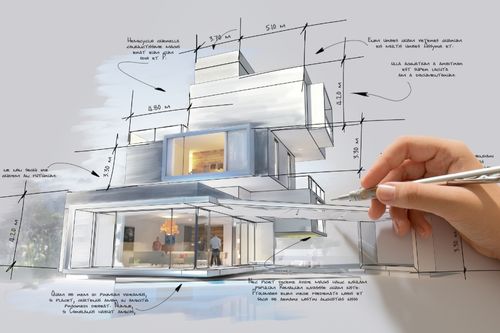How CDA Architects Provide Cutting-Edge Solutions for Lasting Style
How CDA Architects Provide Cutting-Edge Solutions for Lasting Style
Blog Article
A Thorough Summary of Building Designs and Their Impact on Modern City Planning and Advancement
Architectural designs have long served as a mirror to the societal worths and technical advancements of their time, playing a critical function in shaping modern city planning and development. From the magnificence of Neoclassicism to the utilitarian method of Brutalism, each design has presented special principles that influence metropolitan looks and capability.
Historic Summary of Architectural Styles

As cultures transitioned through the Center Ages, Gothic style emerged, characterized by its verticality and detailed outlining, mirroring the spiritual goals of the period. The Renaissance noted a resurgence of classic suitables, combining art and design in innovative manner ins which affected succeeding styles across Europe.

Today, architectural designs proceed to develop, driven by globalization and sustainability problems, reflecting a vibrant interaction between heritage and innovation. This historic summary highlights the value of architecture as a mirror of social evolution and as a catalyst for urban advancement.
Key Architectural Styles Explained
The diversity of building designs mirrors the myriad impacts that shape our developed setting, each symbolizing distinct qualities and cultural significances. Trick building designs consist of Classical, Gothic, Baroque, Innovation, and Postmodernism, each standing for special historic contexts and visual ideologies.
Timeless design, rooted in ancient Greece and Rome, stresses proportion, percentage, and using columns (cda architects). On the other hand, Gothic design, prospering in the Middle Ages, is defined by pointed arcs, ribbed safes, and flying buttresses, producing a spiritual top quality in basilicas. Baroque architecture, emerging in the 17th century, is marked by magnificence, sophisticated decoration, and a dynamic interaction of light and shadow
Modernism, which acquired momentum in the very early 20th century, prioritizes function over kind, utilizing brand-new products like steel and glass to develop minimalist structures. Postmodernism, responding against the austerity of Innovation, welcomes eclecticism and historic referral, usually integrating spirited aspects and irony.

Effect On Urban Preparation
In forming the development of cities, building styles considerably influence metropolitan preparation decisions. The option of architectural design usually determines the aesthetic appeals, capability, and overall character of metropolitan settings.
Moreover, building styles can impact zoning policies and land utilize plans. Urban organizers have to take into consideration the dominating architectural patterns when developing districts, making certain that brand-new developments integrate with existing frameworks. This consideration promotes cohesive metropolitan landscapes and enhances neighborhood identification.
The execution of specific architectural designs can likewise influence socioeconomic variables within a city. High-end modern styles may bring in upscale homeowners and organizations, leading to gentrification, while extra economical housing solutions could prioritize practical and sustainable styles to suit varied populations. cda architects. Inevitably, the interaction between architectural styles and urban preparation develops dynamic cities that show both historical context and contemporary demands, shaping the lived experiences of their occupants
Sustainability and Modern Design
Building styles play a crucial function in dealing with contemporary obstacles, particularly in the realm of sustainability. As urban areas expand and ecological problems intensify, modern-day design increasingly accepts sustainable design principles that prioritize energy performance, resource conservation, and minimal ecological influence.
Contemporary building motions, such as biophilic layout and eco-friendly design, advocate for structures that balance with their environments, making use of natural products and advertising biodiversity. These styles usually incorporate renewable power resources, such as solar panels and wind turbines, to reduce reliance on nonrenewable fuel sources and reduced carbon footprints.
Moreover, the combination of advanced modern technologies, such as clever building systems, improves power administration, optimizing resource usage go to the website while making certain occupant comfort. Cutting-edge water monitoring strategies, including rainwater harvesting and greywater recycling, more add to sustainable city settings.
Especially, sustainability prolongs beyond ecological worries; it incorporates social and economic measurements. By promoting community health and promoting inclusivity, modern architectural styles straighten with sustainable development goals. Subsequently, the advancement of building methods proceeds to shape resilient cities that not only fulfill the needs of the existing however also secure the future for generations to come.
Community Engagement in Style
Community involvement in style acts as a vital bridge between engineers and the populations they view publisher site serve, ensuring that the developed environment shows the demands and desires of its users. This collaborative procedure invites neighborhood participants to contribute their understandings and choices, fostering a feeling of possession and obligation towards the areas they live in.
Effective community engagement utilizes numerous approaches, such as workshops, studies, and public forums, to gather diverse perspectives. These methods assist in a two-way dialogue, permitting engineers to understand regional contexts while equipping homeowners to articulate their concerns and wishes. This inclusivity not just enhances the style quality however likewise advertises social equity by dealing with the special obstacles faced by marginalized groups.
In addition, area interaction can bring about innovative options that might not arise in a traditional design process. By integrating local understanding and cultural values, engineers can develop rooms that reverberate more deeply with individuals, improving usability and sustainability. Ultimately, focusing on neighborhood engagement in design procedures results in atmospheres that nurture social interactions, support well-being, and enhance neighborhood ties, thereby playing a crucial function in forming contemporary metropolitan landscapes.
Conclusion
Building designs have exceptionally influenced modern More Info city planning and growth, mirroring developing social and technical contexts. The integration of historic looks with modern demands fosters city environments that prioritize sustainability and neighborhood engagement. As cities remain to grow and adapt, the ongoing discussion in between architectural heritage and modern design principles will certainly stay important in creating comprehensive, dynamic spaces that improve lifestyle and promote social equity. The future of city development hinges on this harmonious equilibrium.
Report this page